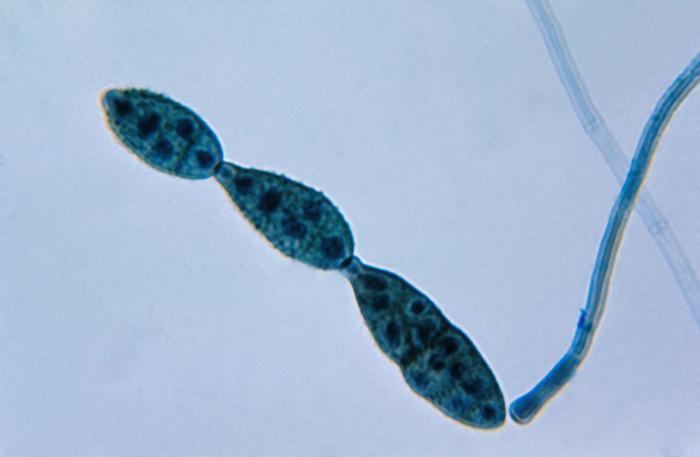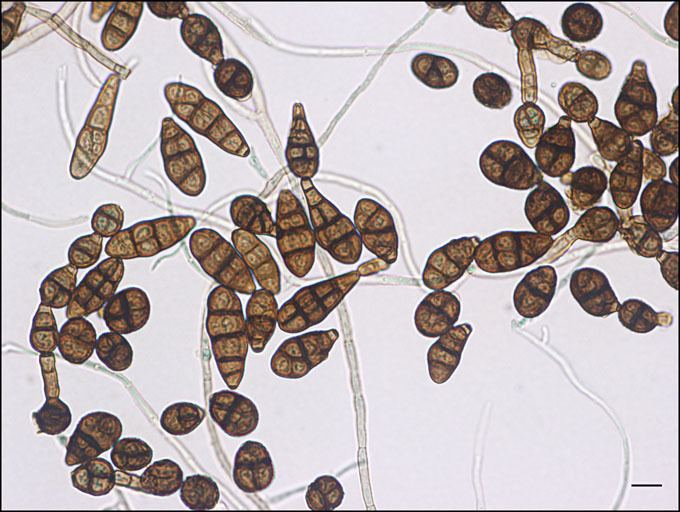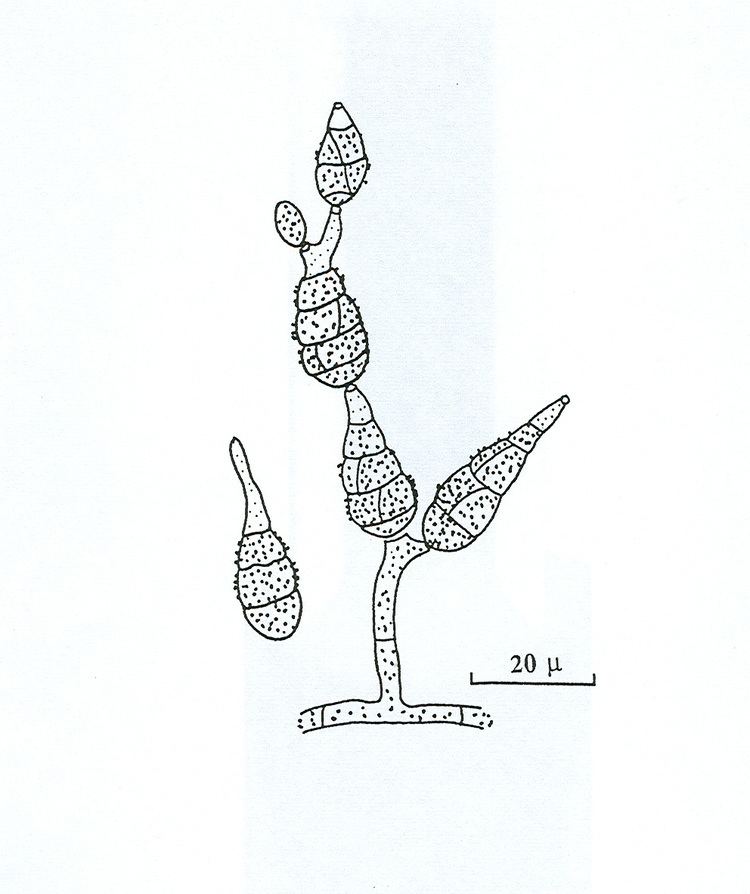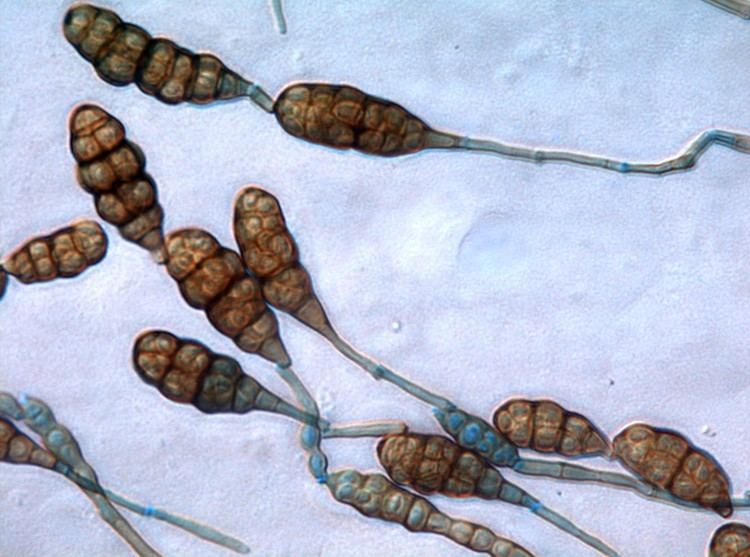Subdivision Pezizomycotina Higher classification Pleosporaceae | Scientific name Alternaria Rank Genus | |
 | ||
Lower classifications Alternaria alternata, Alternaria solani, Alternaria brassicicola, Alternaria cucumerina, Alternaria tenuissima | ||
71 common molds rhizopus penicillium fusarium alternaria
Alternaria is a genus of ascomycete fungi. Alternaria species are known as major plant pathogens. They are also common allergens in humans, growing indoors and causing hay fever or hypersensitivity reactions that sometimes lead to asthma. They readily cause opportunistic infections in immunocompromised people such as AIDS patients.
Contents

There are 299 species in the genus; they are ubiquitous in the environment and are a natural part of fungal flora almost everywhere. They are normal agents of decay and decomposition. The spores are airborne and found in the soil and water, as well as indoors and on objects. The club-shaped spores are single or form long chains. They can grow thick colonies which are usually green, black, or gray.
At least 20% of agricultural spoilage is caused by Alternaria species; most severe losses may reach up to 80% of yield, though. Many human health disorders can be caused by these fungi, which grow on skin and mucous membranes, including on the eyeballs and within the respiratory tract. Allergies are common, but serious infections are rare, except in people with compromised immune systems. However, species of this fungal genus are often prolific producers of a variety of toxic compounds. The effects most of these compounds have on animal and plant health are not well known. Many species of alternaria modify their secondary metabolites by sulfoconjugation, however the role of this process is not yet understood. The terms alternariosis and alternariatoxicosis are used for disorders in humans and animals caused by a fungus in this genus.

Not all Alternaria species are pests and pathogens; some have shown promise as biocontrol agents against invasive plant species. Some species have also been reported as endophytic microorganisms with highly bioactive metabolites.

Alternaria species
Species
Species include:


